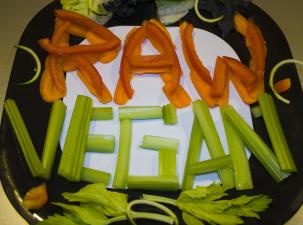Food & Agriculture
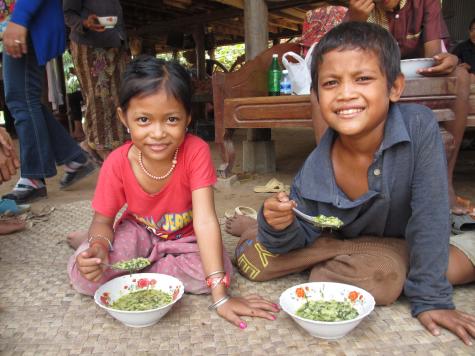
➡️ AGRICULTURE & FOOD SECURITY – Feeding the World
To provide a healthy and nutritious diet for all of Earth's 8 billion inhabitants, the careful management of nature, resources, and the agricultural industry is essential.
The global food situation is complex. More than 10% of the global population suffers from hunger. Meanwhile, 25% are overweight or obese, and a further 25% suffer from nutrient deficiency. Current poorly designed food systems based around intensive agriculture result in environmental degradation, deforestation, biodiversity loss, soil depletion, the pollution of water sources, and the displacement of communities.
Jump straight to our resources on ➡️ Food & Agriculture
Explore our comprehensive guides on -
-
Hunger, Malnutrition, and Thirst
-
Agriculture in Developing Countries
-
The Climate Crisis and its Impact on Agriculture
-
Vegans, Vegetarians, and a Healthy Diet
Shockingly, despite such high levels of global food scarcity and hunger, one-third of the food we produce is then wasted. Hunger also has a gender issue - 60% of those facing food insecurity are women. The true vulnerability of our food systems was exposed when the covid-19 pandemic plunged 122 million more people into hunger. The Russian war in Ukraine then created vast disruptions and price hikes to the world's supply of grains, cereals and fertilisers.
Experts agree that our food systems have been broken for decades. Poor choices, concentration of power, and putting profit over people have led to a lack of change.
"There is more than enough food in the world to go around. More than enough money to fund efficient and sustainable food systems to feed the world, while supporting decent work for those who grow the food we eat." - UN Secretary-General António Guterres
German speakers should visit our partner site, Bessere Welt Info, for 1,900 links on Nahrung.

Food Insecurity & Malnutrition
One of the worst realisations about hunger and food insecurity is the reality that the world produces enough food for everyone. Vast inequalities, conflict, poverty, food waste, and a host of other issues mean that 828 million people go hungry every day.
Global levels of hunger are actually rising. The second Sustainable Development Goal, which is to eradicate hunger by 2030, is way off track. In a study by the IIASA, estimates predict that there will still be 2.5 billion people experiencing moderate to severe food shortages globally at the end of 2030.
In our guide to global hunger, you will find reliable news sources, information on organisations and food aid such as the World Food Program, and excellent resources on the global food crisis, the right to food, food sovereignty, locust swarms, and World Food Day.
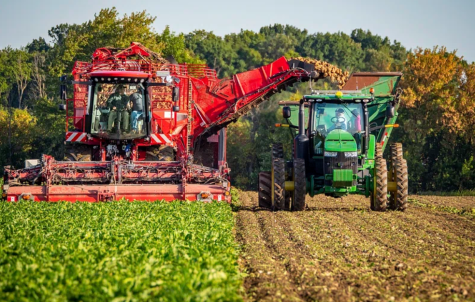
Issues with Modern Agriculture
With the demand for food increasing exponentially over the last century, farming practices have had to intensify to not only feed the planet, but also to keep prices low. The green revolution in the 1980s saw the introduction of technology into the world of farming, which resulted in much larger crop yields and the spread of monoculture. This intensification and large-scale land use change led to detrimental environmental impacts, including soil degradation, acidification, desertification, erosion, ecosystem destruction, biodiversity loss, deforestation, and excessive agro-chemical use.
Intensive use of fertilisers and pesticides has created pest and weed resistance, has implications for human health, and pollutes local water sources. Sustainable agriculture, organic farming, and permaculture provide eco-friendly alternatives, but corporate control of agriculture acts as a major barrier to change.
Globalisation and the demand for out-of-season foods all year round means that the food industry has a heavy carbon footprint. Food transport now accounts for 19% of food emissions. The food miles of some foods are huge - before a banana can reach the UK, it must first travel an average of 5,106 miles!

Our food systems are broken. The average meal now travels over 1,500 miles from the farm to our table. One famous example is packaged sliced pears grown in Argentina, packed in Thailand, and then sold in the U.S.A., which for food manufacturers is bizarrely cheaper than sourcing food locally. Not only is this practice disastrous for the environment, but it is also based on the exploitation of cheap labour, promotes the loss of food sovereignty, and traps local farmers in a cycle of poverty.
The distance our food travels to reach its market is making the time between harvest and consumption longer. Plastic packaging is used to lengthen the shelf life of almost all our goods. Not only is this detrimental to our environment, but plastics can leach harmful chemicals into our food products.
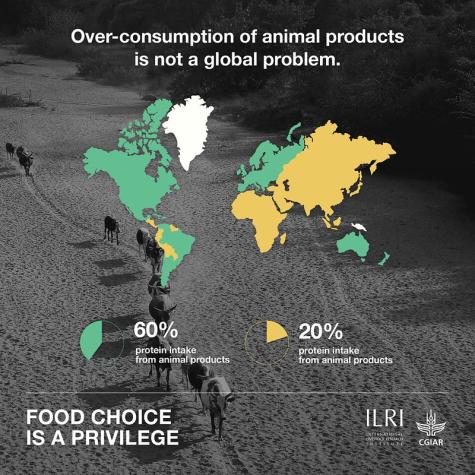
The Meat Industry - Big Meat and its Global Influence
Livestock farming presents serious concerns to our planet as demand and intensification of the industry spirals. Cattle ranching in the Amazon is responsible for 70% of land clearance. The global figures are shocking - 26% of (ice-free) land is used for livestock grazing, and 33% of the planet's total croplands are used to produce livestock feed to sustain these animals.
Eighty billion animals are slaughtered each year for human consumption. Some countries have a greater taste for it than others. Americans eat more than 1.5 times the average daily protein requirement. Overconsumption of meat has negative health implications, such as a higher risk of heart disease, diabetes, obesity, and cancer. If the whole planet shared the meat-heavy diet of the average American, the world would be able to feed just 2.5 billion people.
The connection between the meat industry and the climate crisis has been recognised for decades. Methane production, animal cruelty associated with factory farming and live animal transport, antibiotic resistance, the use of growth hormones, and the increase in zoonotic diseases present further global issues.
More than 3 billion people worldwide rely on fish as their primary source of protein. Seafood is the largest traded food commodity in the world, and around 12% of the world is dependent on the fishing industry for its income. As a key part of the global economy, it is no surprise that serious issues have arisen with the intensive nature of the modern fishing industry.
The FAO estimates that 70% of fish populations are either fully used, overused, or in crisis due to overfishing. Disregarding quotas and maritime boundaries, lack of enforced regulation, and the use of illegal nets and fishing techniques have made the industry unsustainable, cruel, and dangerous for workers.
Many people are now turning to vegetarian and vegan diets to end their complicity in the cruel nature of modern animal farming, make healthier choices, and lower their carbon footprints.
The Impact of Climate Change on Agriculture
Not only are agricultural and food industries suffering because of the effects of climate change, but the industry itself is a major driver of greenhouse gas emissions. Between 19-29% of these harmful gases produced are a direct result of our current agricultural systems.
Livestock, crops, and fertiliser generate vast amounts of nitrous oxide and methane. Deforestation removes our Earth's natural carbon sponge, and long-distance food transport burns even more fossil fuels.
Without serious changes to more sustainable practices, the industry that humanity relies upon for survival is going to destroy itself. Agriculture is extremely vulnerable to the effects of climate change. Increasing temperatures, weather unpredictability and instability, shifting weather patterns, invasive crops and pests, drought, and extreme weather events are reducing crop yields, lowering the quality of major cereals, reducing livestock productivity, and destroying livelihoods.
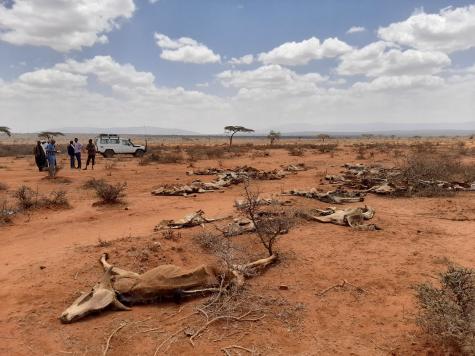
Giant corporations are using technology to adapt and become more resilient. However, family farmers, small holdings, and rural farmers in developing countries cannot afford such luxury. As resources become more scarce, conflicts over limited arable land are becoming more common. Many farmers are on the frontline of climate change and have been forced to flee their land as it becomes unworkable and unprofitable.
There are currently over 376 million climate refugees around the world who have been displaced by deadly and catastrophic climate-related events. Afghanistan, Bangladesh, Chad, Haiti, Kenya, Malawi, Niger, Pakistan, Somalia, and Sudan are not only the world's most vulnerable countries to climate change. They are also the ones with the least resources to adapt.
By 2050, global food yields are expected to decrease by more than 10% as a direct result of our changing climate. If current emissions levels are sustained, up to 39% of the Earth's land surface will develop unpredictable conditions for farmers around the world.

GMOs – The Future of Food?
The term genetically modified organisms refers to plants, animals, or microorganisms which have had their DNA altered to enhance certain features. Foods produced which contain GM organisms are called GM foods.
GM foods were developed to stabilise crop yields, improve food security, and increase profit margins. These miracle seeds grow into crops resistant to diseases, herbicides, and drought. They also grow faster and can have greater nutritional qualities. Animals have been bred to reap similar benefits for human consumption.
Critics state that GMOs could have profound implications for human health and the environment. GM foods have a higher possibility of causing allergic reactions, antibiotic resistance, immunosuppression, and potentially cancers.
Environmental concerns include the risk of outcropping, the negative impact on insects and other species, loss of biodiversity, and the contamination of local ecosystems. There is also an ethical debate regarding genetic engineering, as the manipulation of human and animal genes and the potential health risks are not fully understood. The practice is also detrimental to smaller family-owned farms as traditional farming practices die out and are dominated by agricultural corporations and the use of technology.
The famous legal case involving Monsanto highlights various issues related to GM foods. The agricultural biotech giant came up against a small-town farmer after the company's genetically modified canola was discovered in his crops. Monsanto argued that the patented seeds were being used without a license and won.

Fixing Broken Food Systems for a Better World
If we are producing enough food to feed everyone on the planet, yet poor nutrition and hunger are responsible for nearly half of all deaths in children under 5, then something has gone horribly wrong.
Our food systems are failing farmers, consumers, and the planet.
We must put our food back in the hands of local farmers and increase the accessibility and affordability of fresh, nutritious produce. The availability and low cost of fast, processed, calorie-heavy food needs to be regulated in wealthy countries to prevent a health crisis. In the U.S., one in six children are now obese - 80% of these children will continue their poor eating habits and grow up to be obese adults.
Reducing food waste is also a huge priority. In the U.S., up to 40% of all food is wasted and ends up in landfill sites. Here, the food rots instead of composting and produces vast amounts of methane – a greenhouse gas even more potent than carbon dioxide.
Governments need to step up their recycling systems to include food waste, local composting areas can be established, and supermarkets need to lower their standards of size and appearance of fruit and vegetables to allow food to be sold that may look a little different but tastes exactly the same.
By shopping locally, eating seasonally, supporting small farmers, eating less meat, refusing plastic packaging, composting our food scraps, shopping at farmers' markets, and eating home-cooked meals, we can all do our bit to take power away from corporate farming and intensive agriculture, as well as helping ourselves and our planet at the same time.
"Our food system belongs in the hands of many family farmers, not under the control of a handful of corporations." – Willie Nelson, Farm Aid Founder and President.
Author: Rachael Mellor, 26.11.23 (Updated 15.04.25) licensed under CC BY-SA 4.0
For further reading on Food and Agriculture see below ⬇️
Info on Food & Agriculture
- Food[71]
- Food Inc.[29]
- VEGETARIANS[132]
- VEGANS[221]
- Genetically Modified Food (GMOs)[364]
- Food Waste[128]
- Whole Food[31]
- FARMING / Agriculture[793]
- Slow Food[23]
- BIG MEAT[420]
- Ultra-processed Food - UPF[83]
- Food Packaging[55]
- Rural Development / Agriculture in Developing Countries

